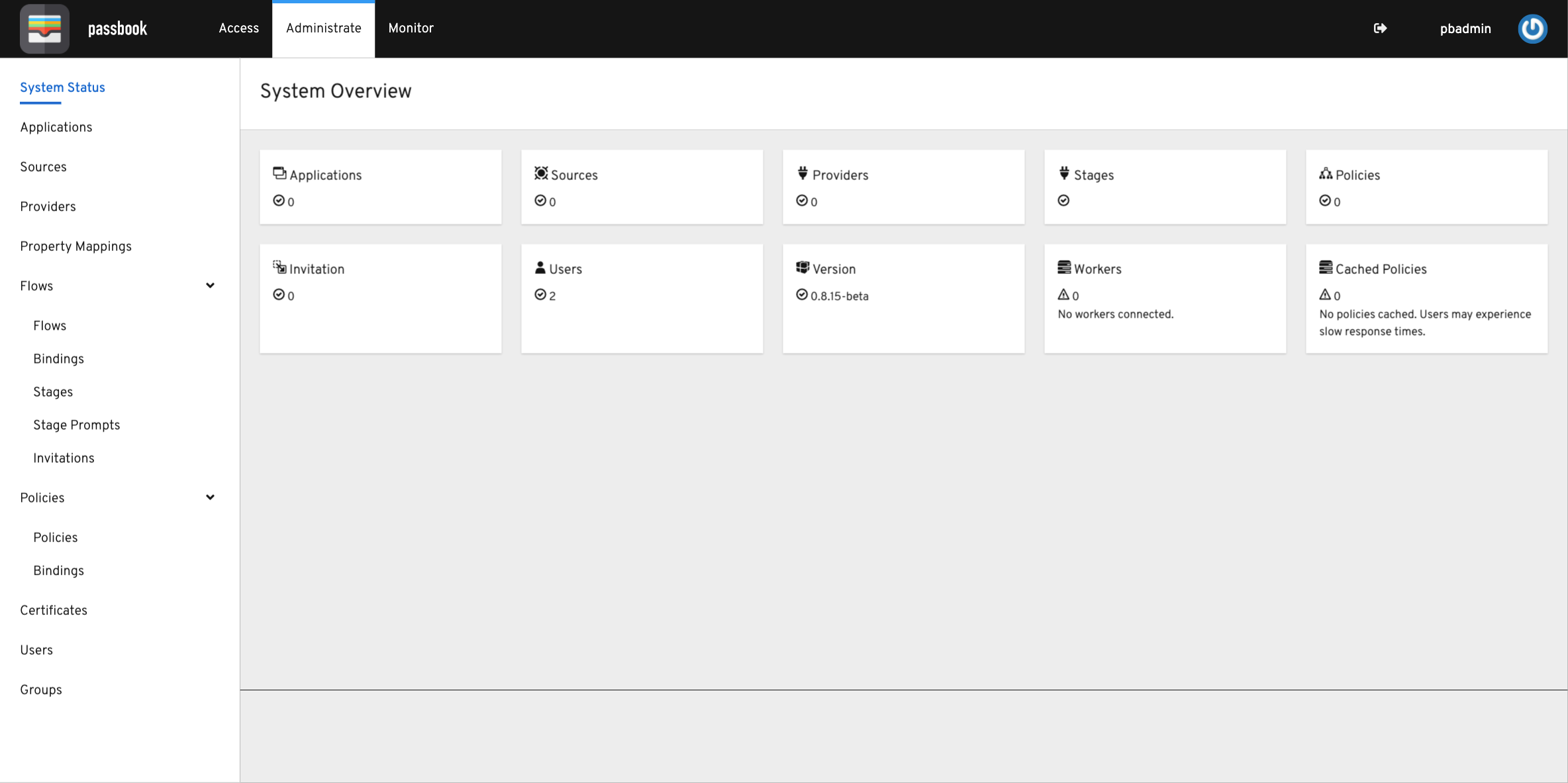<img src="passbook/static/static/passbook/logo.svg" height="50" alt="passbook logo"><img src="passbook/static/static/passbook/brand_inverted.svg" height="50" alt="passbook">






## What is passbook?
passbook is an open-source Identity Provider focused on flexibility and versatility. You can use passbook in an existing environment to add support for new protocols. passbook is also a great solution for implementing signup/recovery/etc in your application, so you don't have to deal with it.
## Installation
For small/test setups it is recommended to use docker-compose.
```
wget https://raw.githubusercontent.com/BeryJu/passbook/master/docker-compose.yml
# Optionally enable Error-reporting
# export PASSBOOK_ERROR_REPORTING=true
# Optionally deploy a different version
# export PASSBOOK_TAG=0.8.15-beta
# If this is a productive installation, set a different PostgreSQL Password
# export PG_PASS=$(pwgen 40 1)
docker-compose pull
docker-compose up -d
docker-compose exec server ./manage.py migrate
```
For bigger setups, there is a Helm Chart in the `helm/` directory. This is documented [here](https://beryju.github.io/passbook/installation/kubernetes/)
## Screenshots


## Development
To develop on passbook, you need a system with Python 3.7+ (3.8 is recommended). passbook uses [pipenv](https://pipenv.pypa.io/en/latest/) for managing dependencies.
To get started, run
```
python3 -m pip install pipenv
git clone https://github.com/BeryJu/passbook.git
cd passbook
pipenv shell
pipenv sync -d
```
Since passbook uses PostgreSQL-specific fields, you also need a local PostgreSQL instance to develop. passbook also uses redis for caching and message queueing.
For these databases you can use [Postgres.app](https://postgresapp.com/) and [Redis.app](https://jpadilla.github.io/redisapp/) on macOS or use it via docker-comppose:
```yaml
version: '3.7'
services:
postgresql:
container_name: postgres
image: postgres:11
volumes:
- db-data:/var/lib/postgresql/data
ports:
- 127.0.0.1:5432:5432
restart: always
redis:
container_name: redis
image: redis
ports:
- 127.0.0.1:6379:6379
restart: always
volumes:
db-data:
driver: local
```
To tell passbook about these databases, create a file in the project root called `local.env.yml` with the following contents:
```yaml
debug: true
postgresql:
user: postgres
log_level: debug
error_reporting: false
```
## Security
See [SECURITY.md](SECURITY.md)